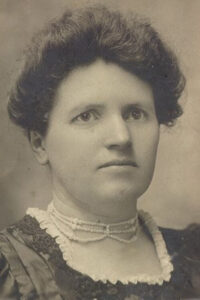
Cabin Fever
There is a certain malady of the mind induced by too much of one thing. Just as the body fed too long upon meat becomes prey to that horrid disease called scurvy, so the mind fed too long upon monotony succumbs to the insidious mental ailment that the West calls “cabin fever.” True, it parades under different names, according to circumstances and caste. You may be afflicted in a palace and call it ennui, and it may drive you to commit peccadillos and indiscretions of various sorts. You may be attacked in a middle-class apartment house, and call it various names, and it may drive you to cafe life and affinities and alimony. You may have it wherever you are shunted into a backwater of life, and lose the sense of being borne along in the full current of progress. Be sure that it will make you abnormally sensitive to little things; irritable where once you were amiable; glum where once you went whistling about your work and your play. It is the crystallizer of character, the acid test of friendship, the final seal set upon enmity. It will betray your little, hidden weaknesses, cut and polish your undiscovered virtues, reveal you in all your glory or your vileness to your companions in exile—if so be you have any.
If you would test the soul of a friend, take him into the wilderness and rub elbows with him for five months! One of three things will surely happen: You will hate each other afterward with that enlightened hatred which is seasoned with contempt; you will emerge with the contempt tinged with a pitying toleration, or you will be close, unquestioning friends to the last six feet of earth—and beyond. All these things will cabin fever do, and more. It has committed murder, many the time. It has driven men crazy. It has warped and distorted character out of all semblance to its former self. It has sweetened love and killed love. There is an antidote—but I am going to let you find the antidote somewhere in the story.
Bud Moore, ex-cow-puncher and now the owner of an auto stage that did not run in the winter, was touched with cabin fever and did not know what ailed him. His stage line ran from San Jose up through Los Gatos and over the Bear Creek road across the summit of the Santa Cruz Mountains and down to the State Park, which is locally called Big Basin.
Read or download Book
B. M. Bower
Bertha Muzzy Sinclair or Sinclair-Cowan, née Muzzy (November 15, 1871 – July 23, 1940), best known by her pseudonym B. M. Bower, was an American author who wrote novels, fictional short stories, and screenplays about the American Old West. Her works, featuring cowboys and cows of the Flying U Ranch in Montana, reflected “an interest in ranch life, the use of working cowboys as main characters (even in romantic plots), the occasional appearance of eastern types for the sake of contrast, a sense of western geography as simultaneously harsh and grand, and a good deal of factual attention to such matters as cattle branding and bronc busting.” She was married three times: to Clayton Bower in 1890, to Bertrand William Sinclair (also a Western author) in 1905, and to Robert Elsworth Cowan in 1921. However, she chose to publish under the name Bower.
Biography
Born Bertha Muzzy in Otter Tail County, Minnesota, to Washington Muzzy and Eunice Miner Muzzy, Bower moved with her family to a dryland homestead near Great Falls, Montana, in 1889. That fall, just before her eighteenth birthday, she began teaching school in nearby Milligan Valley. The school was a small, hastily converted log outbuilding, and she taught twelve pupils. Her experiences as a teacher informed the characters of schoolma’am who appear frequently in her in writings, notably in The North Wind Do Blow (1937), in which a young, eastern-born schoolma’am teaches her first term in central Montana. After one term as a schoolteacher, Bower returned to her family’s homestead.
Marriages
On December 21, 1890, Bower shocked her family by eloping with her first husband, Clayton J. Bower. Their marriage was unhappy. The newlyweds lived first with the Muzzy family, moving later to Great Falls and then to Big Sandy, Montana, in 1898. Her experiences in Big Sandy gave her intimate knowledge of cowboy life on the open range. Bower gave birth to three children during her marriage to Clayton: Bertha Grace in 1891, Harold Clayton in 1893, and Roy Noel in 1896. Eventually, Clayton moved the family to a lonely hayfield cabin, which Bower nicknamed “Bleak Cabin,” about a mile out of Big Sandy. To help with rent, the Bowers accepted a boarder named Bill Sinclair. Sinclair, aged twenty-two, was nine years younger than Bower, but a partnership began between them. Bower lent books to Sinclair and tutored him in writing while he helped her understand the finer points of cowpunching and critiqued the Western stories she had begun to write.
In the meantime, Bower’s first marriage had deteriorated. After Bower had published Chip of the Flying U, her husband had begun to call her “my little red-headed gold mine.” The final break came after he arrived home in a drunken rage. With Sinclair’s help and with money from the sale of Chip of the Flying U, Bower moved to Tacoma, Washington, to stay with her brother Chip and his wife Elvina. The divorce was finalized in 1905. Clayton took custody of Bertha Grace and Harry, while Bower moved back to Great Falls and took custody of Roy. Throughout this difficult time, Bower continued to advance her career, signing her first short-story writing contract for Popular Magazine in January 1905.
Bower and Sinclair married on August 13, 1905, at the Great Falls Methodist Episcopal Church. They rented a two-story home at 111 Sixth Street North where they both focused on their writing careers. A daughter, Della Frances Sinclair, was born during a blizzard on January 24, 1907. That same hard winter destroyed the Sinclairs’ breeding horse herd on land in eastern Valley County where they had hoped to move in the spring. After losing their herd, Bower and Sinclair left Montana for good and moved south and settled in a house on the coast in Santa Cruz, California. Both Bower and Sinclair continued to pursue successful careers as writers through several moves to various houses in California. However, by late summer, 1911, Bower had separated from Sinclair and rented a house in San Jose, California. She also changed publishers, signing with the prestigious Boston publishing house Little, Brown & Company in August 1911.
In 1920, Bower moved to Hollywood and married her third husband, Robert “Bud” Cowan, a cowboy whom she had met in Big Sandy. In 1921, Bower and Cowan reopened a silver mine in Nevada and operated it for several years until the Great Depression forced them to move again, this time to Depoe Bay, Oregon. Their marriage lasted until Cowan died in 1939. Bower did not remarry again.
Writing career
Bower began writing to “save my sanity” after moving to Big Sandy with her first husband. Seeking financial independence from Clayton, she began sending stories to publishers in 1900. She regularly wrote new material while continuing to send out her old stories once a month. Bower published her first short story, “Strike of the Dishpan Brigade,” locally in 1901. Her first short story to be published nationally, “Ghost in the Red Shirt,” appeared in Lippincott’s Magazine in 1904.
Later that year, Bower published her first Western novel, Chip of the Flying U, as a serial in Popular Magazine by Street & Smith. The book introduced readers to the fictional Flying U Ranch and the “Happy Family” of cowboys who lived there. The storyline centers on a cowboy named Chip and his relationship with Dr. Della Whitmore, a self-reliant doctor from the East who “can shoot a coyote, laugh off a hazing, doctor a horse, and turn cowboys into pediatric orderlies.” Their relationship begins coldly when Della takes credit for a painting done by Chip. But they fall in love after Della restores credit to Chip and after Chip rescues Della from a runaway horse. The book was so popular that it was re-released in hardcover in 1906 with three watercolor illustrations by famed painter Charlie Russell. Chip of the Flying U rocketed Bower to fame, and she wrote an entire series of novels set at the Flying U Ranch.
Bower went on to write 57 Western novels. She died in July 1940 in Los Angeles, California, at the age of 68. By the time of her death, her books had sold more than two million copies, not counting her many short stories and articles.
According to Elmer Kelton, Bower’s sales dropped when it was revealed that she was female.
Hollywood
Several of Bower’s novels were turned into films. Chip of the Flying U was adapted for film four times; however, each of these films significantly altered Bower’s narrative. Bower also collaborated with director Colin Campbell, writing stories and screenplays for seven Westerns under the name Bertha Muzzy Sinclair, including the 1921 film The Wolverine. She developed friendships with Gary Cooper and Tom Mix. Mix starred in the first adaptation of Chip of the Flying U (1914) as well as in three other films written by Bower: When the Cook Fell Ill (1914), The Lonesome Trail (1914), and Weary Goes A’Wooing (1915).[8] Bower used her experiences working within the studio system as the source material for several novels, including Jean of the Lazy A (1915), The Heritage of the Sioux (1915), The Phantom Herd (1915), and The Quirt (1920).






